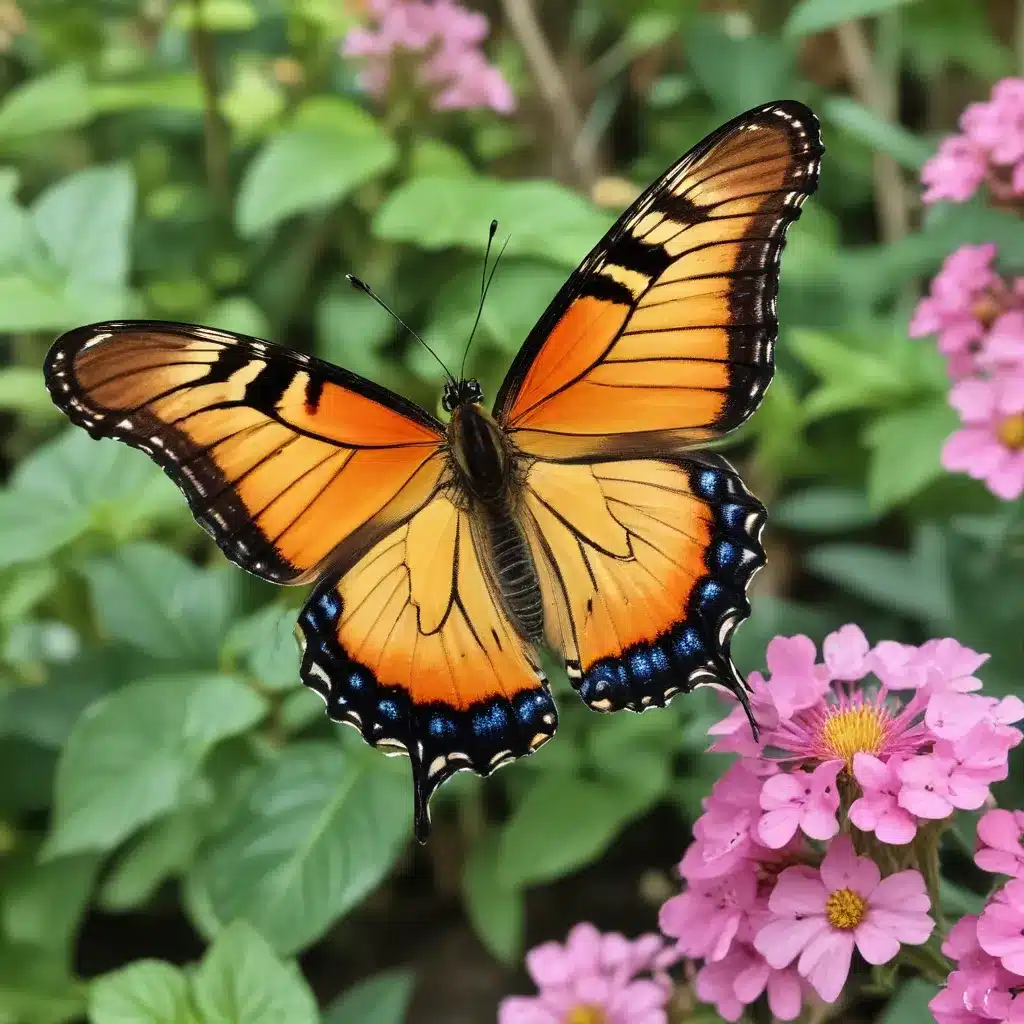
Butterflies are truly enchanting creatures, with their vibrant colors and graceful aerial displays. By designing a dedicated butterfly garden, you can invite these winged wonders to visit your farm and delight both children and adults alike. Creating a thriving butterfly habitat is a rewarding endeavor that combines elements of native plant selection, thoughtful landscape design, and organic maintenance practices.
Essential Elements for Attracting Butterflies
Butterflies have specific requirements when it comes to food, shelter, and breeding grounds. To successfully draw them to your garden, you’ll need to provide a variety of nectar-rich plants, sheltered resting spots, and moist soil areas for “puddling.”
Nectar-Rich Plants
The adult butterflies you hope to attract rely on the sugary nectar of flowering plants as their primary food source. Aim to include a diverse array of native perennials and annuals that bloom at different times throughout the growing season. Some excellent nectar-producing options include bee balm (Monarda), purple coneflowers (Echinacea), black-eyed Susans (Rudbeckia), zinnias, lantana, and verbena. Incorporating a mix of colors, heights, and bloom periods will ensure a constant supply of nectar for your winged visitors.
Sheltered Resting Spots
Butterflies need places to rest, warm up, and avoid predators. Provide sheltered areas with small rocks, logs, or even a butterfly house where they can perch and bask in the sun. Strategically positioning plants with different heights, from low-growing groundcovers to taller shrubs or trees, will create a layered, multi-dimensional habitat that meets their needs.
Moist Soil and Puddling Areas
In addition to nectar, butterflies also require access to water and minerals. Creating shallow depressions filled with moist sand or gravel will allow them to “puddle” and extract important nutrients from the soil. You can even mix in a bit of Gatorade or soy sauce to provide an extra boost of electrolytes and minerals.
Plant Selection for Butterfly Habitats
Choosing the right plants is crucial for attracting and supporting a diverse array of butterfly species. Focus on native flowering plants, plan for a seasonal bloom succession, and include host plants for caterpillars.
Native Flowering Plants
Native plants are always the best choice for butterfly gardens, as they have co-evolved with the local butterfly species. Some standout native options include milkweed (Asclepias), prairie blazing star (Liatris), butterfly bush (Buddleja), and Joe Pye weed (Eupatorium). These plants not only provide abundant nectar but also serve as host plants for caterpillars.
Seasonal Bloom Succession
To ensure a continuous supply of nectar throughout the growing season, select plants with different bloom times. This might include early-spring bloomers like hyacinth and crocus, mid-summer favorites like lantana and zinnia, and late-season stars like asters and goldenrod. By planning for a successive bloom, you can create a lush, butterfly-friendly garden from spring to fall.
Host Plants for Caterpillars
Remember that butterflies start their lives as caterpillars, which have very specific food requirements. Identify the host plants preferred by the butterfly species you want to attract and be sure to include them in your garden design. For example, monarch butterflies will only lay their eggs on milkweed (Asclepias) plants, while the zebra swallowtail relies on the pawpaw tree (Asimina triloba).
Landscape Planning and Layout
The arrangement and placement of your garden elements can have a significant impact on its appeal to butterflies. Consider zoning, pathways, and a layered vegetation structure to create an inviting and functional butterfly habitat.
Zoning and Placement
Strategically position your butterfly-attracting plants in sunny, sheltered areas of your garden. Group nectar-rich annuals and perennials together in beds or borders, and locate host plants and shrubs/trees in more discreet locations. Avoid planting everything in a single, flat layer; instead, strive for a tiered design with low-growing groundcovers, mid-height perennials, and taller shrubs or trees.
Pathways and Seating
Incorporate meandering pathways that allow visitors to wander through your butterfly garden and observe the winged wonders up close. Provide seating areas, such as benches or a butterfly house, where people can sit and enjoy the show. These relaxing spots will encourage guests to slow down, soak in the sights and sounds, and truly appreciate the beauty of the butterflies.
Layered Vegetation Structure
The vertical arrangement of your plants plays a crucial role in creating a welcoming butterfly habitat. Aim for a layered design with low-growing groundcovers, mid-height perennials, and taller shrubs or trees. This diverse vegetation structure not only provides visual interest but also offers the shelter, nesting sites, and host plants that butterflies require at different stages of their life cycle.
Maintenance and Care Considerations
Maintaining a thriving butterfly garden requires a holistic, organic approach that avoids the use of harmful chemicals. Focus on pest management through natural methods, regular monitoring and observation, and minimal disturbance to the habitat.
Organic Pest Management
Steer clear of chemical pesticides and herbicides, as these can be detrimental to butterflies and other beneficial insects. Instead, embrace natural pest control methods, such as encouraging predatory insects like ladybugs and lacewings, or using organic insecticidal soaps or neem oil** to target specific pest outbreaks.
Avoiding Chemical Pesticides
Chemicals, even those labeled as “safe for butterflies,” can have unintended consequences and disrupt the delicate balance of your butterfly garden ecosystem. Opt for organic, natural alternatives whenever possible, and be vigilant about monitoring for any signs of pest problems that may require intervention.
Monitoring and Observation
Regularly observing your butterfly garden is crucial for understanding its dynamics and making informed management decisions. Keep a nature journal to record the various butterfly species you spot, their behaviors, and any changes in the plant community. This valuable data can help you fine-tune your garden design and maintenance practices over time.
By incorporating these essential elements into your butterfly garden design, you’ll create a vibrant, sustainable habitat that will attract a diverse array of winged wonders to your farm. Enjoy the calming presence and captivating displays of these enchanting creatures as they flutter and feast among your carefully curated plants. For more information on creating a butterfly-friendly garden, be sure to visit the Crooked Pines Farm website.


